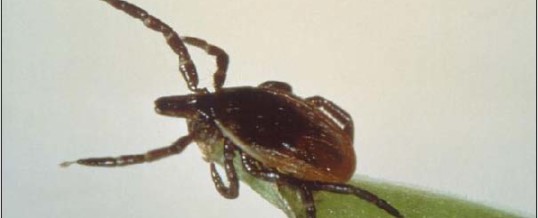
From May through July, people get tick bites and tickborne diseases more often than any other time of year in the United States, but many may not know they are at risk.
Each year, nearly 30,000 confirmed cases of Lyme disease are reported to CDC, but a recent national survey reported that nearly 20 percent of people in areas where Lyme disease is common were unaware that it was a risk.
And even in those areas where the disease is common, 42 percent of individuals reported taking no personal preventive measures against ticks.
Other key tickborne diseases include Rocky Mountain spotted fever, anaplasmosis, ehrlichiosis, and babesiosis. These diseases tend to be concentrated in specific parts of the country.
Nearly 95 percent of Lyme disease cases occur in 12 states:
- Connecticut
- Delaware
- Maine
- Maryland
- Massachusetts
- Minnesota
- New Hampshire
- New Jersey
- New York
- Pennsylvania
- Virginia
- Wisconsin
CDC recommends people:
- Avoid areas with high grass and leaf litter and walk in the center of trails when hiking.
- Use repellent that contains 20 percent or more DEET on exposed skin for protection that lasts several hours. Parents should apply repellent to children; the American Academy of Pediatrics recommends products with up to 30 percent DEET for kids. Always follow product instructions.
- Use products that contain permethrin to treat clothing and gear, such as boots, pants, socks and tents or look for clothing pre-treated with permethrin.
- Treat dogs for ticks. Dogs are very susceptible to tick bites and to some tickborne diseases, and may also bring ticks into your home. Tick collars, sprays, shampoos, or monthly “top spot” medications help protect against ticks.
- Bathe or shower as soon as possible after coming indoors to wash off and more easily find crawling ticks before they bite you.
- Conduct a full-body tick check using a hand-held or full-length mirror to view all parts of your body upon returning from tick-infested areas. Parents should help children check thoroughly for ticks. Remove any ticks right away.
Tickborne diseases can cause mild symptoms to severe infections requiring hospitalization. The most common symptoms of tick-related illnesses can include fever/chills, aches and pains, and rash. Early recognition and treatment of the infection decreases the risk of serious complications, so see your doctor immediately if you have been bitten by a tick and experience any of these symptoms.
For more information, visit http://www.cdc.gov/ticks or call CDC Info at 1-800-CDC-INFO.
MAY
2016
